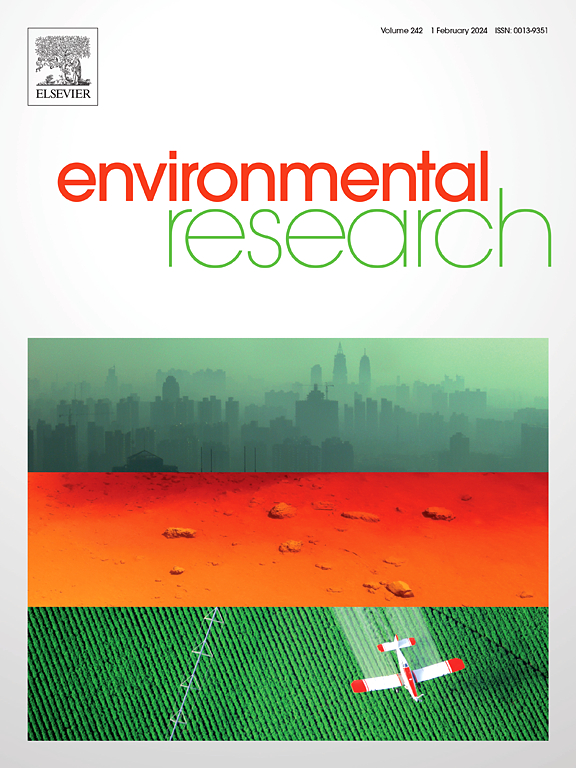中国土地利用与碳储量时空演变:基于PLUS-InVEST模型和SHAP的多情景模拟与驱动因素分析
IF 7.7
2区 环境科学与生态学
Q1 ENVIRONMENTAL SCIENCES
引用次数: 0
摘要
全球气候变化背景下土地利用/覆被变化与碳储量的时空分布及其驱动因素研究已成为生态环境科学研究的热点问题。作为全球碳排放的主要贡献者,了解中国的碳排放变化及其驱动因素对于应对气候变化和实现碳中和至关重要。本研究将中国划分为7个主要的生态带,并建议采用CMIP6气候情景(SSP1-2.6、SSP2-4.5、SSP5-8.5)与PLUS和InVEST模型相结合的组合模式。本研究系统分析了1990 - 2020年中国土地利用与生态承载力的时空演变,并对2030年和2050年三种未来情景下的变化进行了预测。采用随机森林和SHAP方法,量化了自然和人为因素对CS的影响权重。主要研究结果如下:①1990 - 2020年,中国的社会生产总值呈稳步上升趋势,但区域差异显著;青藏高原是最大的CS区,占2020年全国CS总量的26.96%,而高度城市化和人口密集的华南地区CS份额最低,仅为4.39%。②在SSP1-2.6情景下,2030年和2050年CS最高,分别达到1.003 × 1011 t和1.026 × 1011 t,与2020年相比增长率分别为3.33%和5.79%;在SSP5-8.5情景下,CS呈下降趋势,2030年和2050年CS分别为9.31 × 1010 t和9.32 × 1010 t,比2020年分别下降4.01%和3.91%。SSP2-4.5场景预测CS相对稳定。(3)自然和人为因素是气候变化的主要驱动因素。这些因素的重要性在不同地区有所不同。该研究为生态保护和碳中和政策的制定提供了科学的见解。本文章由计算机程序翻译,如有差异,请以英文原文为准。
Spatiotemporal evolution of land use and carbon storage in China: Multi-Scenario simulation and driving factor analysis based on the PLUS-InVEST model and SHAP
The spatiotemporal distribution of land use/cover changes (LUCCs) and carbon storage (CS), as well as their driving factors under global climate change, have become key issues in ecological and environmental sciences. As a major contributor to global CS, understanding China's CS changes and the driving forces is crucial for addressing climate change and achieving carbon neutrality. In the study, China is split into seven major ecological zones, and a combined model is suggested that uses the CMIP6 climate scenarios (SSP1-2.6, SSP2-4.5, SSP5-8.5) along with the PLUS and InVEST models. The study systematically analyzes the spatiotemporal evolution of land use and CS from 1990 through 2020 and predicts the changes under three future scenarios for 2030 and 2050. Using Random Forest and SHAP methods, the study quantifies the impact weights of natural and anthropogenic factors on CS. The main findings are as follows: (1) From 1990 to 2020, China's CS showed a steadily increasing trend, but with significant regional differences. The Qinghai-Tibet Plateau is the largest CS area, accounting for 26.96 % of the national total CS in 2020, while the highly urbanized and densely populated South China region has the lowest CS share, only 4.39 %. (2) Under the SSP1-2.6 scenario, CS will be highest in 2030 and 2050, reaching 1.003 × 1011 t and 1.026 × 1011 t, respectively, with growth rates of 3.33 % and 5.79 % compared to 2020. Under the SSP5-8.5 scenario, CS shows a downward trend, with 9.31 × 1010 t and 9.32 × 1010 t in 2030 and 2050, respectively, corresponding to a decrease of 4.01 % and 3.91 % compared to 2020. The SSP2-4.5 scenario predicts relatively stable CS. (3) Natural and anthropogenic factors are the primary drivers of the spatiotemporal changes in CS. The importance of these factors varies across different regions. The study provides scientific insights for ecological protection and carbon neutrality policy formulation.
求助全文
通过发布文献求助,成功后即可免费获取论文全文。
去求助
来源期刊

Environmental Research
环境科学-公共卫生、环境卫生与职业卫生
CiteScore
12.60
自引率
8.40%
发文量
2480
审稿时长
4.7 months
期刊介绍:
The Environmental Research journal presents a broad range of interdisciplinary research, focused on addressing worldwide environmental concerns and featuring innovative findings. Our publication strives to explore relevant anthropogenic issues across various environmental sectors, showcasing practical applications in real-life settings.
 求助内容:
求助内容: 应助结果提醒方式:
应助结果提醒方式:


